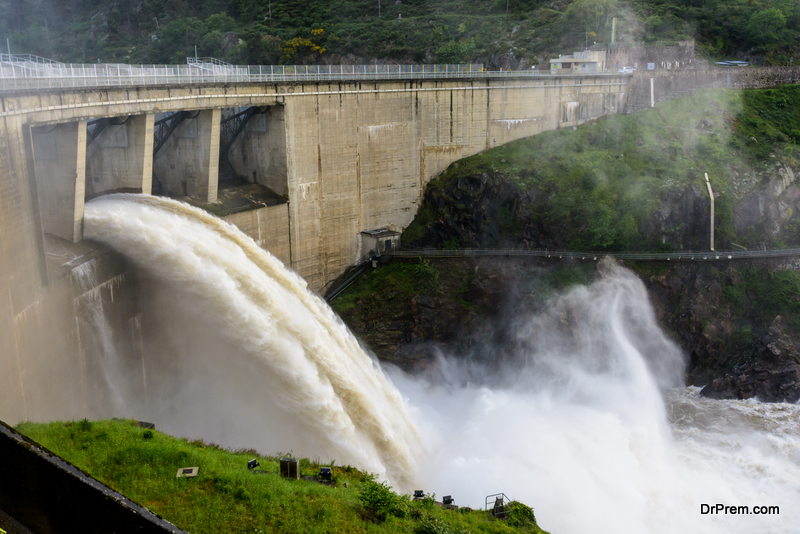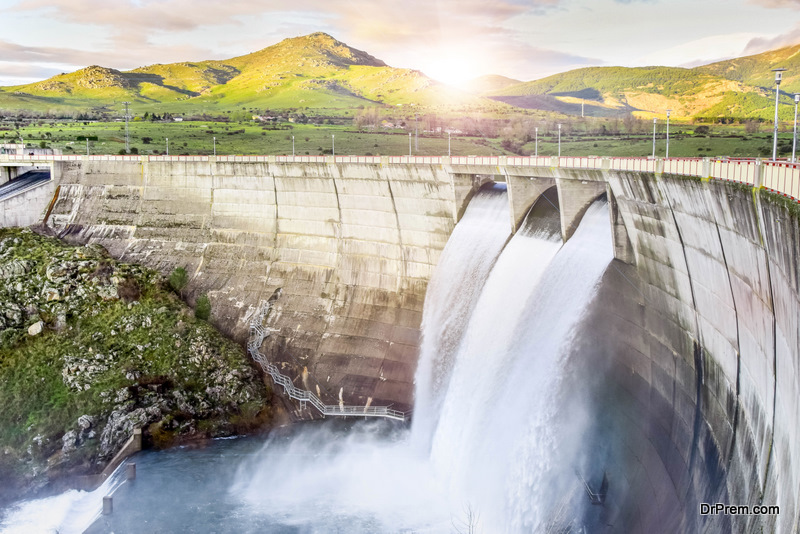Hydropower was responsible for humanity’s first large-scale electricity project. In 1895, water flowing over Niagara Falls was diverted to spin 2 generators, producing electricity to manufacture carborundum and aluminum.
That started the construction and development of millions of dams worldwide, transforming the energy of moving water into the energy of moving electrons and giving people light, heat, and power.
The technology behind hydropower hasn’t had any significant changes in the past century, until recent years. From monitoring dam assets to new fish-friendly technologies, engineers and scientists are now taking a fresh look at hydropower and trying to make it more sustainable and safer.
But, first, you need to know why there’s a need for new solutions.
The Negative Impact of Hydropower
Hydropower is renewable and clean. However, it does have negative side effects:
1. Damage to Migratory Paths and Wildlife Habitats
 To construct large storage hydropower plants, you need to block, divert, or change the natural course of a river system. And blocking the natural flow of rivers means blocking the important migration routes of fish. Most fish depend on inland rivers in order to reproduce. So, by blocking the flow of the river with dams, these fish can’t make it into their breeding ground.
To construct large storage hydropower plants, you need to block, divert, or change the natural course of a river system. And blocking the natural flow of rivers means blocking the important migration routes of fish. Most fish depend on inland rivers in order to reproduce. So, by blocking the flow of the river with dams, these fish can’t make it into their breeding ground.
Over time, these dammed rivers cause a significant reduction of fish populations causing negative impacts on the health of a river ecosystem as well as human food supply.
In addition, damming rivers can also reduce sediment and water flow to dangerous levels, impacting the downstream wildlife population. Low-nutrient water flows downstream which can lead to the loss of habitat and source of healthy water for animals.
Not to mention that reservoir waters are more stagnant than the normal river water. This can cause higher amounts of sediments and nutrients, cultivating an excess of algae and other aquatic weeds that crowd out other river plants-life and animals.
2. Greenhouse Gas Emissions
Generating power by spinning turbines with water energy doesn’t emit any greenhouse gases or use any fossil fuels. However, recent studies show that water reservoirs created by damming rivers significantly contribute to atmospheric greenhouse gases.
This is because the organic materials trapped in the reservoirs such as dead plants eventually break down and release gases such as methane and carbon dioxide into the reservoir water.
3. Risk of Failure
 Since dams hold back large volumes of water, sub-standard construction, sabotage, or natural disasters, paired with the extreme influx of water, can be disastrous to downriver infrastructure and settlements.
Since dams hold back large volumes of water, sub-standard construction, sabotage, or natural disasters, paired with the extreme influx of water, can be disastrous to downriver infrastructure and settlements.
And even if that’s not the case, the strong water currents released from the dams can cause flooding. For this reason, most people are often forced to relocate in order to facilitate the construction of water dams.
Making Hydropower Safer and Eco-friendlier
While hydropower isn’t the perfect source of power, there are certain solutions that can help improve hydropower systems to be much safer and environmentally friendly.
1. Fish-Friendly Dams
 With the recognition of hydropower’s impact on fish migrations and habitat, there have been several innovations developed to make dams fish-friendly.
With the recognition of hydropower’s impact on fish migrations and habitat, there have been several innovations developed to make dams fish-friendly.
The earliest devices used to help migrating species are ladders. These fish ladders are small elevated passes or steps made in dams that enable fish to migrate downstream or upstream of the dam. Unfortunately, research shows that these ladders haven’t been working like they’re supposed to and the fish aren’t making it to where they need to go.
A more modern approach is the introduction of instream turbine technology. This technology offers a less ecologically intrusive approach, promoting hydropower without the many negative impacts mentioned above. Turbines can produce steady power, less maintenance, and are considered ecologically friendly to fish since turbines are safer and easier to pass through.
Meanwhile, some hydroelectric facilities implement the ‘trap-and-haul programs,’ which collect fish and transport them past the dam and releasing them. Other experts suggest the temporary halting of energy production during fish migrations.
A more viable long-term solution for most locations is the thorough planning of dam placement, ensuring that vital migration paths are not disturbed. In some cases, this means removing the old dams and allowing the river to return to its natural flow to restore the habitat of aquatic wildlife.
2. Planning Land Use
Hydropower requires extensive measures of reducing greenhouse gas in order to be sustainable.
One strategy to do this is to better plan land use around the river basins upstream of the dam. This helps in protecting the natural environment in the river’s watershed. As a result, erosion and flooding are better contained, which helps in reducing the greenhouse gas pollution into the air from the reservoir since there will be fewer decaying organic materials in the water.
3. Increasing Efficiency and Capacity To Existing Dams
 Most of the hydropower dams in the world were built 50 or even 100 years ago. Most of these dams use inefficient and outdated power-generating equipment. Dam owners need to bring these dams up to modern standards, ensuring that every drop of water is used in producing maximum power.
Most of the hydropower dams in the world were built 50 or even 100 years ago. Most of these dams use inefficient and outdated power-generating equipment. Dam owners need to bring these dams up to modern standards, ensuring that every drop of water is used in producing maximum power.
In addition, among the millions of dams constructed, only a fraction has hydropower capacity. It can be appropriate to add hydropower to these existing dams, only if it doesn’t cause more degradation to the local environment that’s already compromised by the existence of these dams. This helps increase the production of power without the extra environmental and wildlife impact of having to build another dam.
4. Uphold Safety and Maximize Dam Lifespans
The majority of today’s dams require significant repairs. Thus, dam owners should take this into consideration and be responsible for ensuring that these plants are secure and safe.
In addition, owners can also invest in dam monitoring solutions that can help manage the safety and integrity of dams, thus reducing the risk of catastrophic failure while boosting operational efficiencies.
Also, for a structure to be truly ‘green,’ it should be built with its full lifespan in mind. Retrofitted or new dams should have a decommissioning strategy that includes a set-aside fund dedicated to restoring the river and aquatic life when the dam becomes obsolete.
Conclusion
There’s no doubt that hydropower has potential and plays a huge role in the world’s energy supply. While it may impact the environment, innovative technologies continue to improve hydropower plants, providing the chance for hydroelectricity to become an even safer, cleaner, and, hopefully, completely eco-friendly source of power.
Article Submitted By Community Writer




